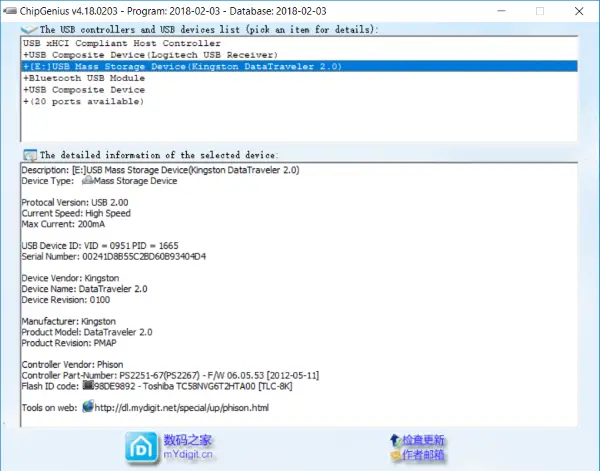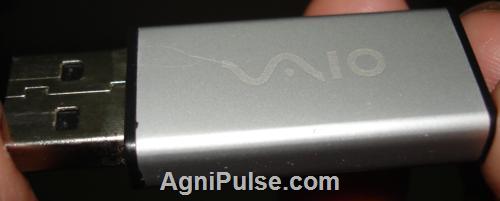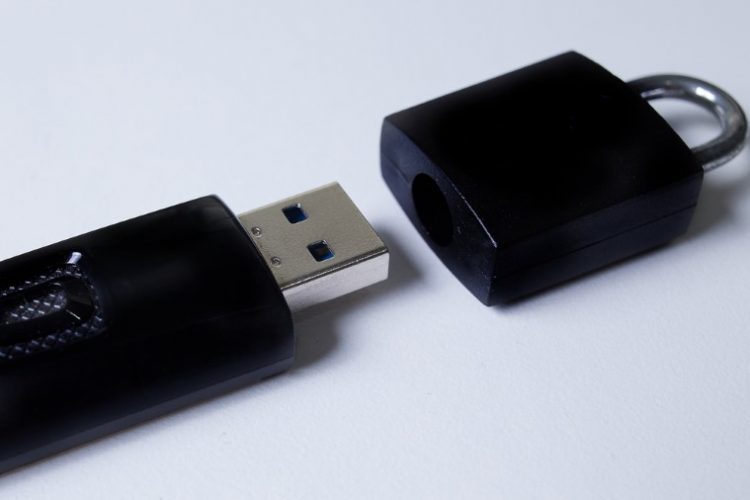- What I am not clear about is how to go about the emulation of insertion/removal. It seems that one option is to emulate a (virtual) USB hub and have it fake the device arrival/departure events (and I would also supply the device driver for my virtual USB device and that's where my device logic will reside).
- USB Driver Installation Guide (DOC, 278 KB) Hydro EDGE C5215 32bit Driver (7.6 MB) Hydro EDGE C5215 64bit Driver (5.9 MB) Hydro ELITE C6750: Verizon Wireless: USB Driver Installation Guide (DOC, 280 KB) Hydro ELITE C6750 32bit Driver (7.2 MB) Hydro ELITE C6750 64bit Driver (4.9 MB) Hydro ICON C6730: Boost Mobile.
You need a USB repair tool when your USB flash drive is corrupted or unrecognized by your computer. Symptoms such as that you can't access data in the drive or you are seeing errors like 'please insert the disk into removable disk', 'you need to format the disk before using it', 'raw drive', 'flash drive not formatted' all indicate that the USB drive is corrupted and needs to be repaired.
The most important task in USB drive repairing is to recover data from the corrupted or damaged drive. Therefore, this post will start with USB drive data recovery tool to extract files from the problematic flash drive, then cover 3 flash drive repair tools to fix your drive back to normal. Here we go.
You May Also Like:
# Before USB Repair: Recover Data from USB Drive
Some USB flash drive repair tools will format your USB drive(which will erase everything) to fix its software problem. Therefore, if the files in the flash drive matter to you, before applying a USB repair utility to the drive, you may want to recover all your data from the broken drive.
Please be warned that counterfeit (fake) PL-2303HX (Chip Rev A) USB to Serial Controller ICs using Prolific's trademark logo, brandname, and device drivers, were being sold in the China market. Counterfeit IC products show exactly the same outside chip markings but generally are of poor quality and causes Windows driver compatibility issues. Kindly note that a large number of 'fake' Prolific USB adapters are now on sale on popular online sites. These adapters, which tend to be a translucent blue or green colour and are sold at very low prices, do not actually contain a Prolific chip (they use a fake inferior clone chip but still 'identify' themselves under the USB protocol by using.
Since you can't access what's inside the pen drive right now, you need to use FonePaw Data Recovery(opens new window), a software utility that can recover files from a corrupted flash drive and save them on a computer. Pictures, videos, documents(.doc, .pdf, .xls, etc.), audio files can all be extracted from the USB drive with FonePaw Data Recovery.
It takes 4 steps to get back files from a USB drive with the FonePaw utility.
Step 1 Run Broken USB Data Recovery Tool
Download FonePaw Data Recovery to your Windows or Mac computer.
After installation, run the utility.
Step 2 Recognize the USB Flash Drive
Plug the corrupted flash drive to your computer. The FonePaw tool will recognize the connected storage device and show it under Removable Device.
Tick the checkbox before the USB drive and tick the types of files to recover.
Click Scan.
Step 3 Restore Data from Corrupted USB Drive
The utility will scan the corrupted USB drive to restore data from it. If your needed files can't be found after a quick scan, click Deep Scan to get more files detected from the flash drive.
Step 4 Save USB Data to Computer

The files from USB drive will be organized in different categories.
Select the files and click Recover to save them on your computer.
With all your data back to your computer, you can use a flash drive repair utility to fix the corrupted USB drive.
# USB Drive Repair Tool: Windows Disk Error Checking
The first tool you can use to repair a USB flash drive is the built-in disk repair tools in Windows and Mac computer.

USB Repair Tool on Windows
To use Windows' built-in USB repair software, follow these 5 steps.
Step 1Plug the USB drive into your computer.
Step 2 Find the USB drive in File Explorer, right click on it and select Properties.
Step 3 Under the Tools tab, click Check in Error Checking section.

Step 4 A new pop-up window appears. Click Scan and repair drive.
Step 5 The tool will scan the USB drive and repair USB drive errors if it can find any.
#USB Repair Tool on Mac
First Aid on recovery mode can serve as a computer flash drive repair tool on Mac.
Step 1 Restart your Mac and press Command + R during the reboot until the Mac boots into recovery mode.
Step 2 Click Disk Utilities(Utilities) > Disk Utility.
Step 3 Select the connected USB drive under External and click First Aid to run it.
Step 4 Wait until the repair to complete. Click Done.
# USB Drive Repair Tool: CHKDSK Utility
CHKDSK, short for check disk, is a Windows utility that can be used to check and fix errors on a drive. Therefore, you can use the utility to repair a corrupted USB drive.
Step 1 Open Command Prompt on Windows XP, Vista, 7, 8, 10. You can find it from Start menu and search 'cmd' in the search bar.
Step 2 Remember the drive letter of the corrupted USB drive.
Step 3 Enter chkdsk f: /f /r /x. F is the USB drive letter on my computer. Replace f with the drive letter of yours.
Usb Driver Download Windows 10
#Understand the CHKDSK commands
/f: fix errors in the USB drive.
/x: Dismount the USB drive.
/r: Locate bad sector on the flash drive and recover data from it.
If the USB repair tools fail to fix the corrupted USB drive, you will need to format the USB drive(opens new window) to get the problem fixed. Before formatting the drive, try FonePaw Data Recovery(opens new window) to extract your data from the damaged USB drive and then get corrupted flash drive fixed.
The counterfeit drive problem
There are many fake capacity USB flash drives on the market that claim a particular capacity, but only delivery somewhat less than this (particularly the larger drives). This is sometimes refered to as fake 'oversize capacity'. The counterfeit drives we have examined appear to have the stated capacity in Windows Properties and it is not until you test the drive with BurnInTest that you see that there is significantly less real space.
There is also a similar problem of low quality drives (which may or may not also be counterfeit). These drives might have the capacity they state on the box, but be of such low quality that they corrupt files or lose data stored on them.
While many stores, such as Ebay and other online auctions, provide information on how to detect some of these fake USB flash drives, they generally rely on physical markings on the drive, such as incorrect serial numbers or typing mistakes on the packaging. Of course this only works for well known documented cases of counterfeit drives.
Testing process
Using BurnInTest you can actually test whether your USB flash drive has the amount of storage it claims or not, and test the ability of the drive to store and retieve data without corruption. BurnInTest can be used to write, read and verify large amounts of data to and from the drive, detecting oversize capacity and poor quality drives in the process. This process assume you already have a licensed version of the the BurnInTest software. (You can use the eval edition of BurnInTest, but the eval edition is limited to 15min runs which might not be not run long enough to test large drives)
Step 1
Check that Windows Properties shows that the drive has the size stated. From Explorer, navigate to the USB drive and right-click properties and check the Capacity shown. This should (approximately) match the stated drive capacity, which is usually printed on the outside of the drive, and / or on the box.
Step 2
Use BurnInTest with the following settings to test that the storage is really there. In Configuration->Test Duty Cycles, select the Disk test, set Disk Duty cycle to 100%, duration to 0 (or a long period of time) and set number of cycles to at least 100. Turn all other tests off.

Step 3
In Configuration->Preferences->Disk, select the USB drive to be tested, set the File size to be 1% and the block size to the maximum (currently 1024KB).
Step 4
Run BurnInTest. If the drive does not have the stated capacity then BurnInTest will report an error. In the cases we have seen, a 'Data Verify failure' will be displayed. While it looks like the drive has the stated capacity in Windows Explorer, in the cases we have seem, the drives simply use a repeat of a 512 Byte block of previous real data for files where there is no 'real' storage space.
In the small test window you can see how much of the drive capacity has been tested and the current speed. Check that the entire drive capacity gets tested and check the speed is reasonable. Newer USB2.0 drives should peak above 5MB/sec.
This test approach also applies to fake oversize SD cards, fake oversize Compact Flash cards and other similar memory devices.

More details on the web
Fake USB Drives Sleuthing - linuxrevolution blog
Usb Driver Download
Head back to the BurnInTest FAQ page.